Photo-Bio Part 6: Incubation, Sampling, and Analysis
Toolik Field Station, North Slope, AK
June 24, 2019
Video of the Day:
During our lunch break yesterday at Imnavait Creek, we had a very close encounter with a red fox (Vulpes vulpes).
As a preface to this post, you’ll benefit from reading my overview of the photo-bio project. It’s important to pay attention to the key independent variables:
- Soil Type - Surface layer (organic mat) soil vs. permafrost
- Sunlight Exposure - Dark control vs. sunlight-exposed.
We have now finished Photo-Bio Parts 1-5 for both permafrost and surface mat soil samples. To review the steps:
- Collect soil samples from permafrost and surface mat layers (Part 1).
- Prepare crude soil leachate by adding water to the soil samples and incubating for 72 hours (Part 2).
- Filter crude soil leachate to remove particulates and microbes (Part 3).
- Exposed filtered soil leachate samples to sunlight for 24 hours (with corresponding dark controls) (Part 4).
- Inoculate soil leachate samples with bacteria from the corresponding soil type (Part 5).
Currently, we are incubating inoculated samples and sampling at critical time points for analysis. I’ve starred (yellow) our current location on the below flow chart of the photo-bio experimentation process.
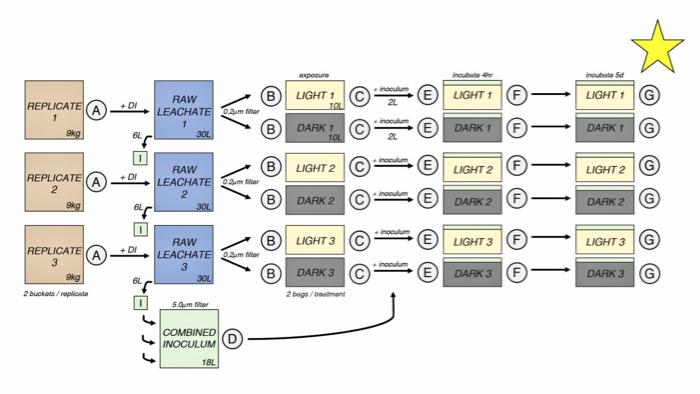 Timeline of the processing of soil samples for the photo-bio research project this summer. What we're currently doing, sampling and analysis, is starred (yellow). Image Source: Natasha Christman (Oregon State University).
Timeline of the processing of soil samples for the photo-bio research project this summer. What we're currently doing, sampling and analysis, is starred (yellow). Image Source: Natasha Christman (Oregon State University).
The two major time points for sampling are at 4 hours and 5 days (post-inoculation). Samples are subjected to a wide array of analyses, both biological and chemical. Here’s the list of data that is taken at multiple time points:
Bacterial cell counts
Bacterial production
Volatile organic carbon
Full water chemistry (diagrammed here)
Metagenomics
Metatranscriptomics
Mass spectrometry
Spectroscopy
Consumed O2
Produced CO2
Many of these assays are completed on-site at Toolik Field Station. Others are completed back in the home labs of the principal investigators (University of Michigan and Oregon State University), the Pacific Northwest National Laboratory, and the U.S. Department of Energy Joint Genome Institute.
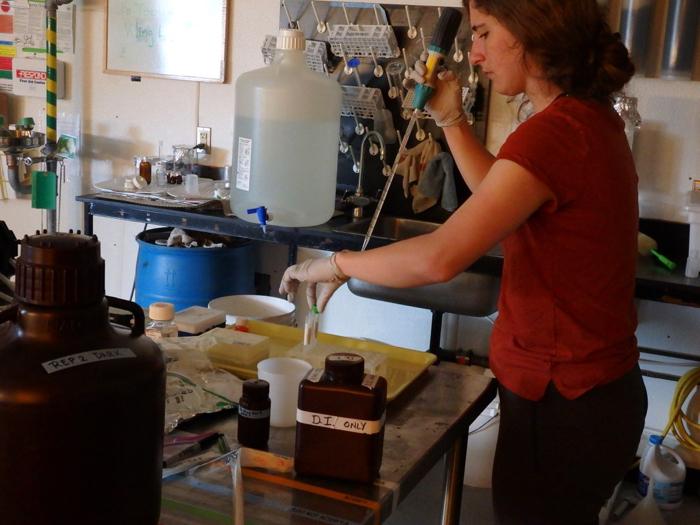 Graduate student Natasha Christman prepares samples for bacterial cell counts. Toolik Field Station, North Slope, AK.
Graduate student Natasha Christman prepares samples for bacterial cell counts. Toolik Field Station, North Slope, AK.
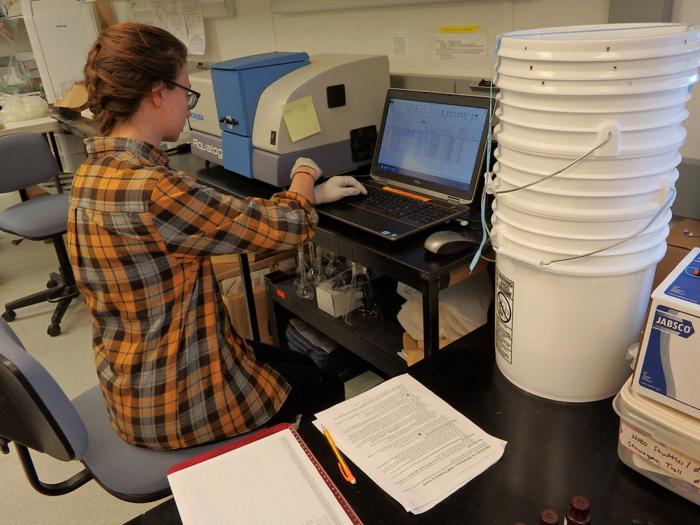 Graduate student Emma Rieb runs samples on the Aqualog (absorbance-fluorescence spectroscopy). Toolik Field Station, North Slope, AK.
Graduate student Emma Rieb runs samples on the Aqualog (absorbance-fluorescence spectroscopy). Toolik Field Station, North Slope, AK.
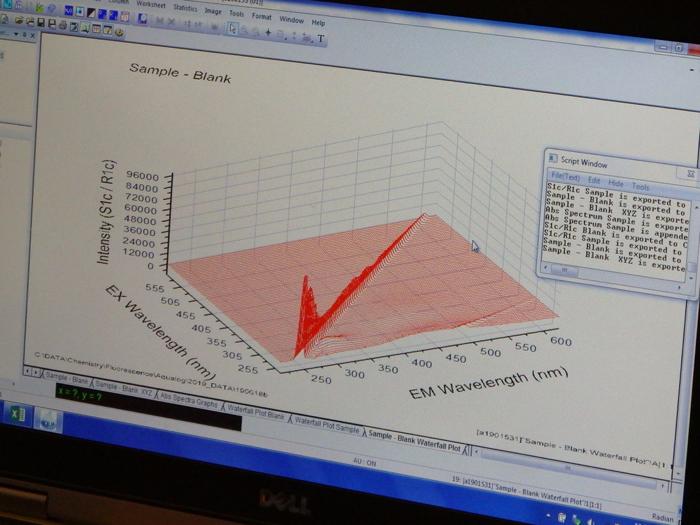 The Aqualog data output is called an excitation-emission spectrum (EEMS). The spectrum depicts wavelengths of absorbance and fluorescence for a sample. Toolik Field Station, North Slope, AK.
The Aqualog data output is called an excitation-emission spectrum (EEMS). The spectrum depicts wavelengths of absorbance and fluorescence for a sample. Toolik Field Station, North Slope, AK.
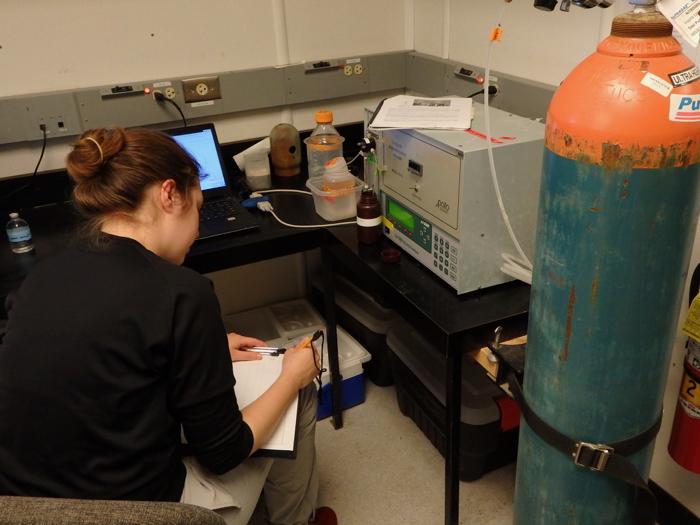 Research technician Katie Polik tests a sample for dissolved carbon dioxide. Toolik Field Station, North Slope, AK.
Research technician Katie Polik tests a sample for dissolved carbon dioxide. Toolik Field Station, North Slope, AK.
Yesterday, I worked in the Toolik woodshop to prepare a modified rack for solid phase extraction. It definitely took awhile to figure out the locations of things in a new shop, but I was pleased with the final product.
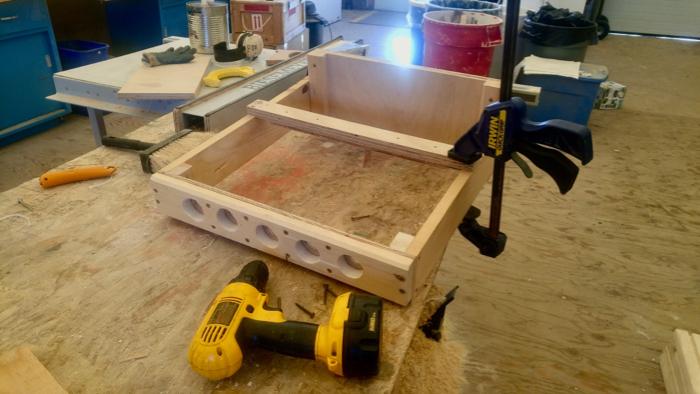 Solid phase extraction rack in nearly-completed state. Very amazed at the amount of tools and machinery available to scientists here at Toolik Field Station.
Solid phase extraction rack in nearly-completed state. Very amazed at the amount of tools and machinery available to scientists here at Toolik Field Station.
Dr. Rose Cory uses this technique to concentrate DOC samples from the leachate, prior to further analysis. The below video and photos provide more information:
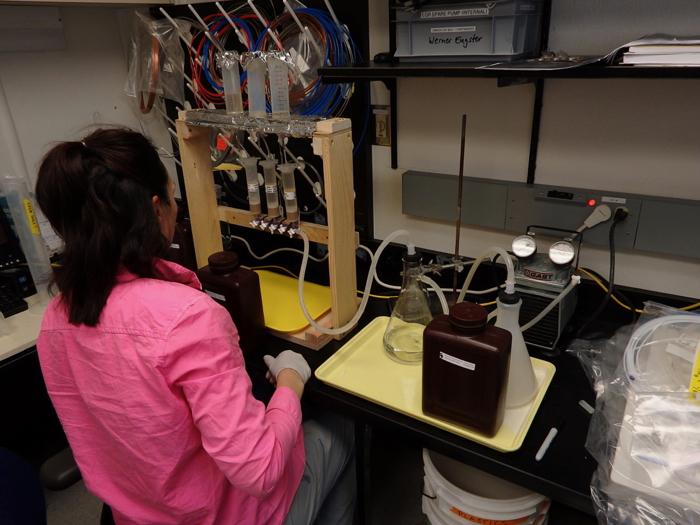 Dr. Rose Cory conducts solid phase extraction on samples of permafrost leachate to concentrate the contained dissolved organic carbon (DOC). Toolik Field Station, North Slope, AK.
Dr. Rose Cory conducts solid phase extraction on samples of permafrost leachate to concentrate the contained dissolved organic carbon (DOC). Toolik Field Station, North Slope, AK.
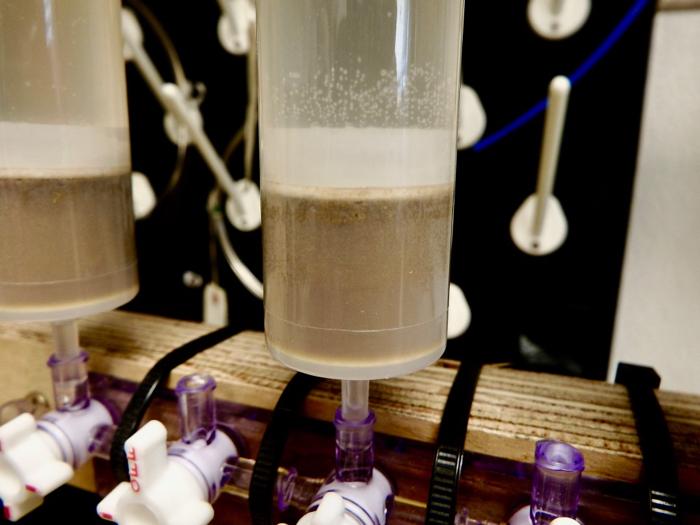 Solid phase extraction of dissolved organic carbon in permafrost leachate. You can see the adsorbed organic carbon as a dark band at the top of the column. Toolik Field Station, North Slope, AK.
Solid phase extraction of dissolved organic carbon in permafrost leachate. You can see the adsorbed organic carbon as a dark band at the top of the column. Toolik Field Station, North Slope, AK.
I’m still very amazed at the amount of high-level chemistry and biology conducted on-site up here in the Arctic. This is truly a world-class facility.
Comment below!


Comments
Add new comment